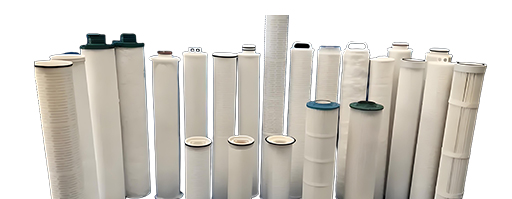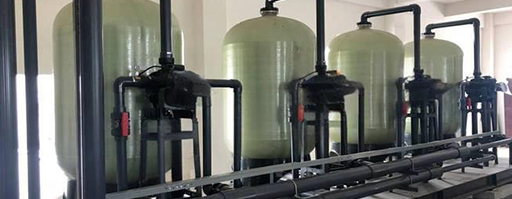Overview
Introduction
Reverse osmosis (RO) is a pressure-driven separation process that employs a semipermeable membrane and the principles of crossflow filtration. RO membranes are typically capable of removing 90%–99% of contaminants such as total dissolved solids (TDSs) in the water supply. The membranes are usually manufactured as a flat sheet of thin composite membranes consisting of an active polyamide layer (high permeability but impermeable to dissolved salts and particulate matter) supported by a porous polysulphone layer wound round a central collection tube. RO membranes are sized on their water volume production rate and the desired hourly or daily rate of water to be used.
Features
1. Total dissolved solids reduction: Reverse osmosis is one of the rare water treatment processes that can boast a total dissolved solids reduction.
2. Cost-effectiveness: Reverse osmosis is popular in industrial settings because it is highly economical compared with alternative filtration methods.
3. Eco-friendliness: Compared with other treatment methods, reverse osmosis is also relatively environmentally friendly. It uses less energy than other methods like thermal distillation because it does not rely on energy generation.
4. Alkalinity and hardness removal: Reverse osmosis removes the calcium and magnesium ions that contribute to hard water, as well as the carbonate ions that contribute to unwanted alkalinity.
Application
Food & Beverage
Industrial Utility Water
Industrial Wastewater
Microelectronics
Municipal Water
Oil & Gas Upstream
Power Generation
Structure & Drawing

Data Sheet
| RO Membrane | |
| Product Specifications | |
| Active Membrane Area | 400 ft² (37 m²) |
| Permeate Flow Rate | 9,000 gpd (34.1 m³/d) |
| Stabilized Salt Rejection | 99.88% |
| Minimum Salt Rejection | 99.75% |
| Boron Rejection | 93% |
| Feed Spacer | 34 mil. |
| Test Conditions | |
| NaCl | 32,000 ppm |
| Boron | 5 ppm |
| Pressure | 800 psi (55 bar) |
| Temperature | 25°C (77°F) |
| pH | 8 |
| Recovery | 8% |
| Permeate Flow Variation | +/-15% |
| Operating Specifications | |
| Max. Operating Pressure | 1,200 psi (82.7 bar) |
| Max. Chlorine Concentration | < 0.1 ppm |
| Max. Operating Temperature | 45°C (113°F) |
| pH Range, Continuous (Cleaning) | 2-11 (2-13) |
| Max. Feedwater Turbidity | 1.0 NTU |
| Max. Feedwater SDI (15 minutes) | 5 |
| Max. Feed Flow | 75 gpm (17 m³/h) |
| Min. Ratio of Concentrate to Permeate Flow for any Element | 5 : 1 |
| Max. Pressure Drop for Each Element | 1.0 bar (15 psi) |
| Product Dimensions | |
| Length | 1,016 mm (40 inch) |
| Element O.D. | 200 mm (8 inch) |
| Perm Tube I.D. | 28.6 mm (1.125 inch) |
| Weight | 16 kg (35 lbs.) |
Product Range
















